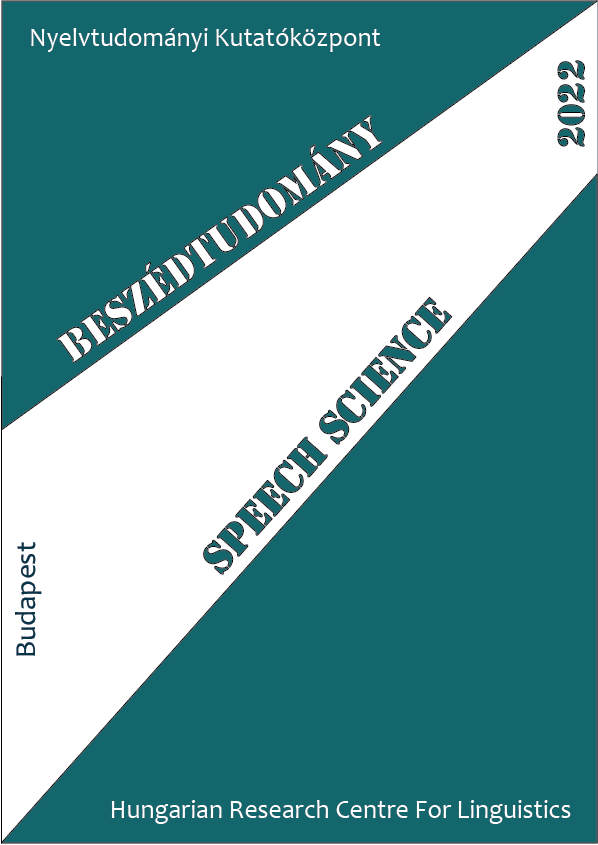A mássalhangzókra ható prozódiai erősítés vizsgálata a magyarban
Előtanulmány
Absztrakt
Prosodic strengthening is the spatial and/or temporal extension of articulatory gestures that occurs at prosodically salient locations, such as the edges of larger prosodic units or stressed syllables. Hungarian consonants have not been analysed with reference to traits of prosodic strengthening so far. In a material of pseudowords with the structure pV 1 pV 1 pV 1 pV 1 forming independent utterances (recorded previously for the examination of prosodic strengthening in vowels), bilabial voiceless plosive consonants were analyzed in terms of the number of bursts, duration, VOT, spectral moments and intensity, as a function of syllable position (first and stressed, internal and final) and adjacent vowels’ quality (/i/, /u/, /6/ and /a:/). The presence and the number of bursts indicated prosodic strengthening (especially) at the domain-initial edge of the phrase. A lack of burst was not detected in the first, stressed syllable. Realizations containing one burst were also most typical for the first syllable, and the occurrence of more than one burst was the least typical here. As for VOT, the interaction of syllable position and vowel quality had a significant effect, and the model explained the data to a large extent. In the first syllable, shorter VOT was measured; however, the difference between the syllable positions (first vs. final) reached the significance level only in close vowels. CoG and SD were lower, while skewness and kurtosis were higher in the first syllable than in the final syllable, reaching the significance level only in open vowels. The intensity of bursts was also higher in the first syllable with a gradual and significant decrease towards the end of the phrase, independently of vowel quality. In general, prosodic strengthening was observed in the first and also stressed syllables’ consonant; however, in most parameters, this effect was dependent on the height of the adjacent vowel. Furthermore, in the analysed parameters the final syllable differed significantly from the first one, which may serve as a clue for boundary perception. Results support the theory that different languages use different combinations of acoustic keys to indicate stress and prosodic boundaries.




